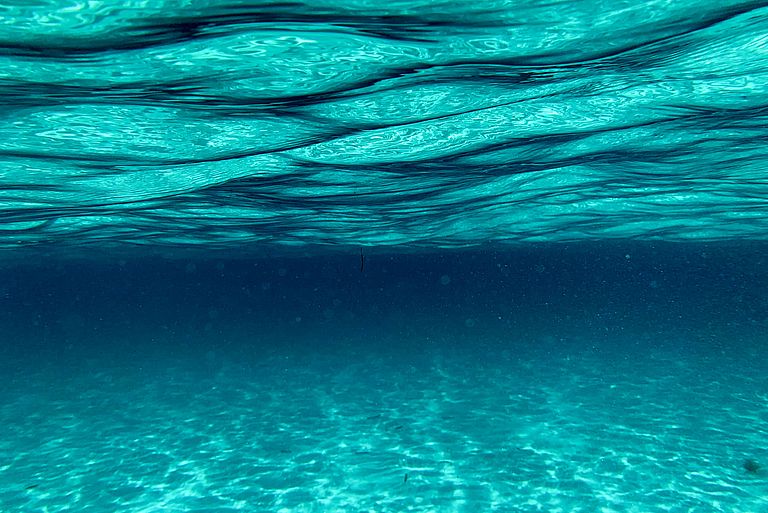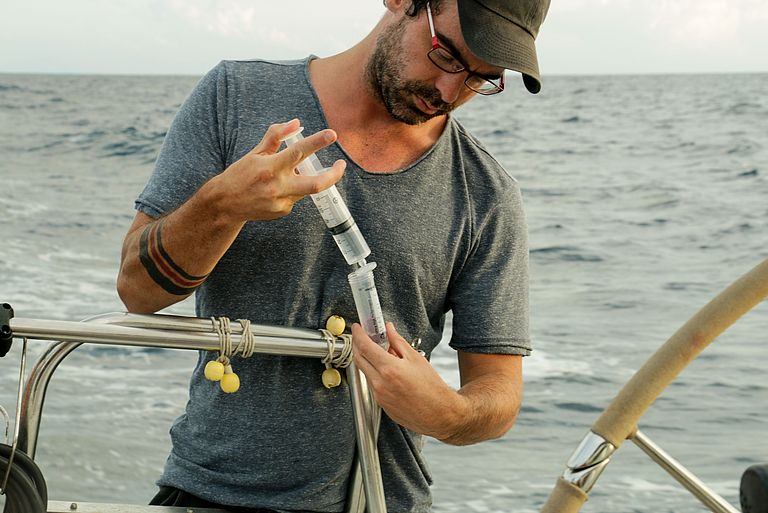Rewriting the history of seawater composition
New study contradicts assumptions of constant element conditions in the oceans
In order to understand current changes in the ocean system and to be able to predict future ones, a look into the past might help. But data from direct measurement of seawater composition hardly go back 150 years. For gaining information from more ancient times scientists use natural archives that indirectly give us insight into processes in the oceans at that time. Determining the ratios of certain elements in seawater, for example magnesium to calcium or strontium to calcium, is an important tool in this context. These ratios are “frozen” in the carbonate skeletons of organisms such as foraminifers or corals and then allow for important conclusions to be drawn about seawater temperatures and other environmental conditions in past times.
Until now, it has been hypothesized that these elemental ratios in the oceans are relatively constant and that they change only very slowly over millions of years. Now, an international research team led by Kiel University (CAU) and the GEOMAR Helmholtz Centre for Ocean Research Kiel under the umbrella of the Future Ocean Network has rechecked this hypothesis in a comprehensive study. “We found that the variability of magnesium-to-calcium and strontium-to-calcium ratios in today's ocean waters may vary significantly from ecosystem to ecosystem. Since a largely uniform composition was previously assumed throughout the ocean, the question arises as to whether an environmental effect has been overlooked,” says Dr. Mario Lebrato, who has initiated the study while working at the Institute of Geosciences at CAU. The results have been published now in the international journal Proceedings of the National Academy of Sciences (PNAS).
For the study, scientists from more than ten countries have collected and subsequently analysed 1100 samples in 14 different ecosystems from the water surface to 6000 metres depth on 79 ship expeditions worldwide over a period of nine years. The results are relevant both for the reconstruction of ocean history and for the understanding of current biogeochemical processes.
“For the reconstruction of seawater temperatures in earlier epochs of Earth's history well defined and constant elemental ratios in seawater were assumed so far. In our laboratory, we have developed special analytical protocols to determine these ratios with very small uncertainties. Our new high-precision data now show that this assumption is not always correct”, says co-author Dr. Dieter Garbe-Schönberg, head of the laboratories for trace element geochemistry at CAU’s Institute of Geosciences.
“It is exciting to see such large spatial differences in elemental ratios in the modern ocean. These findings are difficult to match with our current ideas of transport and mixing of water masses and, therefore, present a challenge for ocean modellers to reconcile these patterns with what we know about ocean physics and the sinks and sources of these chemical elements”, adds Prof. Dr. Andreas Oschlies, head of the Department of Biogeochemical Modelling at GEOMAR and also co-author of the study.
Researchers must now understand what causes the current variability of elemental ratios and what effects it has. “If we have a profound understanding of the underlying mechanisms, we will be able to better use the elemental ratios for different marine scientific disciplines and questions”, Dr. Lebrato emphasizes, who now works at the Bazaruto Center for Scientific Studies (BCSS) in Mosambique, with a view to the future. This is particularly relevant for marine regions near the coast and in high latitudes of the sub-polar regions. Here, the methods used to reconstruct ocean temperatures in the past must be corrected with respect to the regional ecosystems.


![[Translate to English:] The Bararuto Archipelago in Mosambik.](/fileadmin/_processed_/8/a/csm_2000-01-12_Bazaruto_Archipelago_0100_Mario_Lebrato_4800px_c9330fb381.jpg)
![[Translate to English:] The research vessel in the polar sea.](/fileadmin/_processed_/0/7/csm_2004-11-13_Polar_Seas_0101_Debora_Iglesias-Rodriguez_4800px_0035f58b94.jpg)
![[Translate to English:] A device used to collect deep water, called a CTD-rosette, being deployed to collect Atlantic Ocean Deep water samples in the Bermuda Atlantic Time-series Study (BATS).](/fileadmin/_processed_/8/0/csm_2007-09-11_CTD_at_BATS_0102_Mario_Lebrato_4800px_d11104e3bb.jpg)
![[Translate to English:] Coral Reef](/fileadmin/_processed_/2/3/csm_2020-08-07_Coral_Reef_0105_Mario_Lebrato_4800px_de42d78cf9.jpg)
![[Translate to English:] Map with data of the ratios.](/fileadmin/_processed_/2/d/csm_2020-08-18-variability-Mario-Lebrato_4e77787061.jpg)


